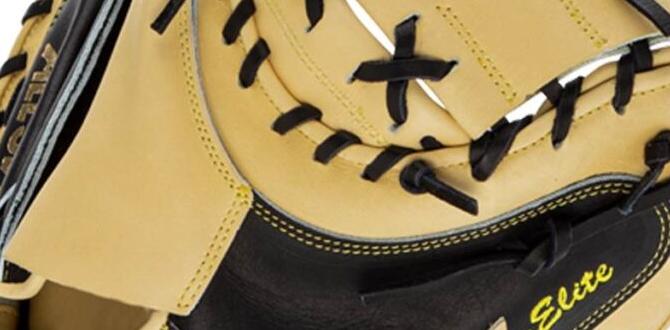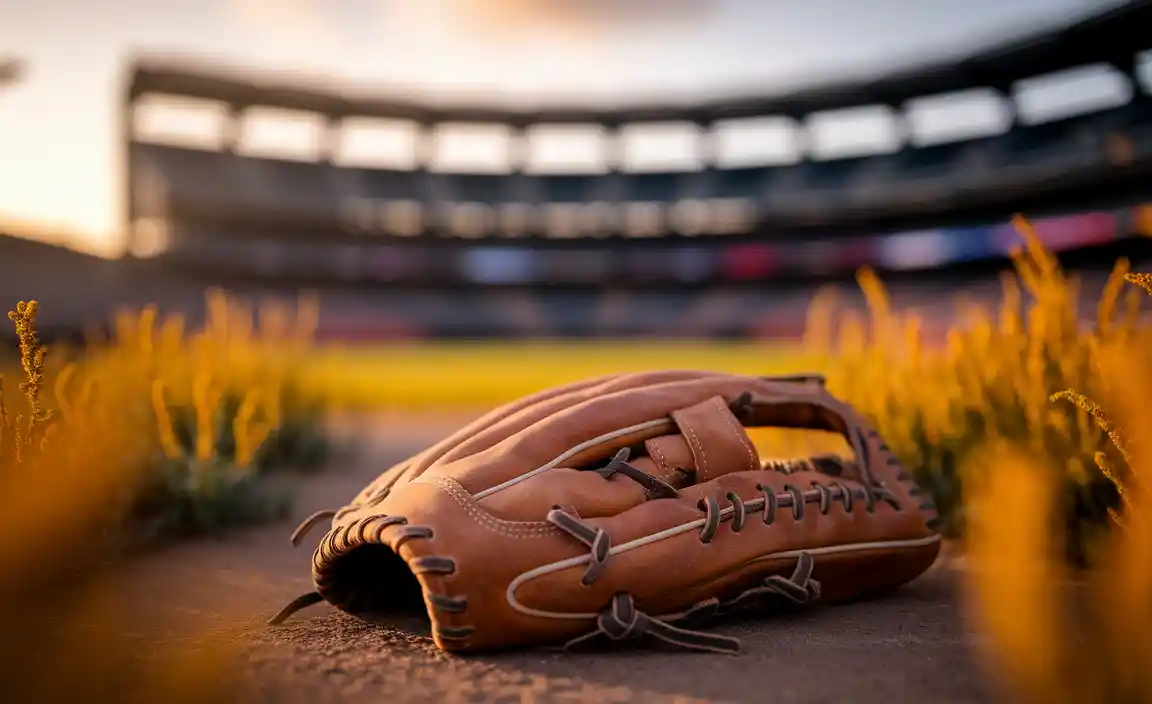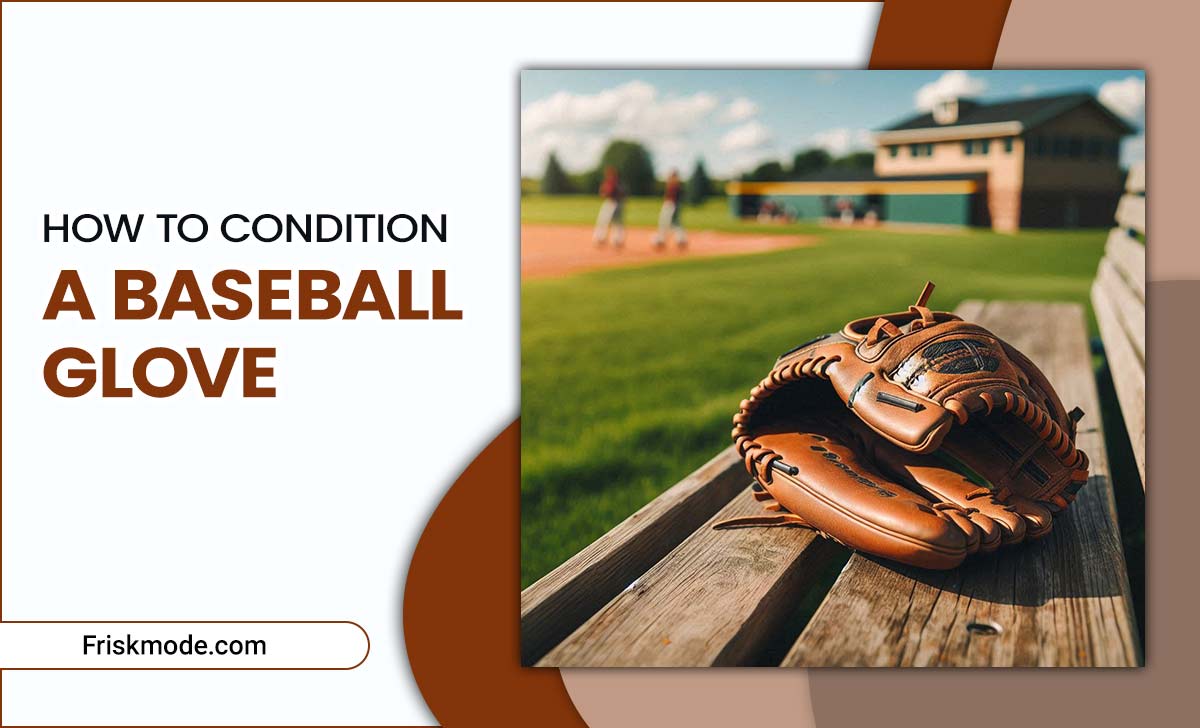Quick Summary: Evoshield catchers leg guards are crucial for protecting a catcher’s knees and shins from foul balls and impacts. This guide helps beginners understand their benefits, features, and how to choose the right set for essential protection on the field.
Evoshield Catchers Leg Guards Set: Essential Protection
As a catcher, you’re the general on the diamond, calling the shots and absorbing the impact. But let’s be honest, those foul tips and errant pitches can sting – and even worse, lead to injuries that keep you out of the game. If you’ve ever felt that jarring impact on your shins or knees, you know exactly what I’m talking about. Sometimes, standard gear just doesn’t feel like enough, especially when you’re just starting out and still getting used to the position. Don’t let discomfort or fear of injury hold you back from the exhilarating role of catcher! This guide is all about ensuring you’ve got the best protection, focusing on the essential gear that makes a huge difference: Evoshield catchers leg guards. We’ll break down what makes them great and how to pick the perfect set for your game so you can focus on your performance, not the pain.
Why Catcher’s Leg Guards Are Non-Negotiable
Being a catcher is a physically demanding position. You spend a lot of time in a crouch, and you’re constantly exposed to fast-moving balls, both from the pitcher and from foul tips off the bat. Protecting your legs and knees is paramount to staying healthy and performing your best. Without adequate protection, you risk painful bruises, potential fractures, and long-term joint issues. Think of your leg guards as your personal shield, absorbing the shock and keeping your legs safe so you can concentrate on making the play.
Catcher’s leg guards do more than just prevent immediate pain. They help you maintain your stance longer, improve your agility in blocking pitches, and generally boost your confidence behind the plate. When you know you’re protected, you’re more likely to attack a blocking situation aggressively, frame pitches effectively, and be a more reliable presence for your pitcher.
Understanding Evoshield’s Innovation: More Than Just Padding
Evoshield has carved out a reputation for innovative protective gear, and their catcher’s leg guards are no exception. What sets Evoshield apart is their proprietary Gel-to-Shell™ technology. This isn’t your grandpa’s bulky foam padding. When you first open an Evoshield product, the material is soft and flexible. But once exposed to air, say, after you unwrap it, the material transforms into a hard, custom-molded shield that’s incredibly strong yet surprisingly lightweight.
This custom molding process is a game-changer for fit and comfort. Instead of a generic shape, the guard molds specifically to your leg. This means better coverage, less chafing, and a feeling that the gear is a natural extension of your body, not a cumbersome add-on. This personalized fit is crucial for a catcher, as it allows for maximum mobility and quick movements without the guards shifting or restricting you.
Key Features to Look For in Evoshield Leg Guards
When you’re eyeing an Evoshield catchers leg guards set, several features contribute to its effectiveness and your comfort:
-
Gel-to-Shell™ Technology: As mentioned, this is Evoshield’s signature. It provides unparalleled impact absorption by hardening on contact. This is the core of their protective advantage.
-
Custom-Molding Fit: The guards mold to your specific leg shape, offering superior coverage and reducing “dead zones” where impacts could still cause injury. This also helps prevent the guards from sliding down during play.
-
Strategic Padding and Venting: Beyond the main shelled area, look for additional padding in high-impact zones like the kneecap and along the shin. Good venting in the design is also essential to keep you cool under pressure and prevent sweat build-up, which can lead to discomfort and skin irritation during long games or practices.
-
Adjustable Straps: Secure and adjustable straps are critical for ensuring the guards stay in place. Look for strong, easy-to-use straps that allow for a snug but comfortable fit. Neoprene or elastic straps often offer a better, more secure feel.
-
Durable Construction: Even though they mold, the outer material needs to be tough to withstand the rigors of the game. Look for robust stitching and abrasion-resistant fabrics, especially in areas that might rub against your shin guard or the ground.
-
Lightweight Design: While protection is key, you don’t want to feel weighed down. Evoshield generally excels at offering a balance between robust protection and a lightweight feel that won’t impede your speed or agility.
Popular Evoshield Catcher’s Leg Guard Models for Beginners
Evoshield offers a range of leg guards, but for beginners, focusing on models that prioritize all-around protection, comfort, and ease of use is key. Here are a couple of popular styles and what makes them suitable:
The Evoshield Pro-SRZ™ Two-Piece Leg Guards
This is often a go-to for many players, including those new to the catcher position. The “two-piece” design typically means the shin guard and knee pad are somewhat separate or articulated, allowing for better flexibility and a more natural feel when bending your legs. The Pro-SRZ™ line consistently features the Gel-to-Shell™ technology along with substantial padding and a secure strap system.
Pros:
- Excellent impact dispersion due to Gel-to-Shell™.
- Custom fit enhances comfort and reduces slippage.
- Considered a full-coverage design, protecting effectively.
- Good articulation for ease of movement.
Cons:
- Can be a bit pricier compared to very basic models.
- The initial molding process takes a little patience.
The Evoshield Gameworth™ Catchers Leg Guards
While sometimes positioned as a slightly more accessible option, Evoshield’s Gameworth™ series still offers significant protection. These might feature slightly different padding configurations or strap systems but will generally incorporate the core Evoshield protective technologies. They are a solid choice for budget-conscious players or those who want reliable protection without the absolute top-tier features.
Pros:
- Offers strong protection at a competitive price point.
- Still benefits from Evoshield’s protective technology.
- Generally durable and designed for consistent performance.
Cons:
- May have slightly less advanced venting or ergonomic articulation than premium models.
- Fit might be slightly less sculpted than the top-tier lines.
How to Choose the Right Size and Fit
Getting the right size is crucial for both protection and comfort. An ill-fitting leg guard can be a safety hazard itself, shifting to expose vulnerable areas or causing chafing and blisters.
Step 1: Measure Your Legs
Most manufacturers, including Evoshield, provide sizing charts. You’ll typically need to measure from the center of your kneecap down to where the guard should end (usually just above the tongue of your shoe) and sometimes also the circumference of your thigh and calf. Always refer to the specific sizing guide for the model you’re interested in. It’s generally better to go slightly larger and have it mold than to have it too small.
| Measurement Needed | How to Measure | Typical Location |
|---|---|---|
| Knee to Ankle/Bottom of Guard | Use a flexible measuring tape. Start at the pointiest part of your kneecap and run the tape straight down the front of your shin/lower leg. | Measure from the middle of the kneecap to about 1-2 inches above where your shoe tongue begins. |
| Thigh Circumference | Measure around the widest part of your thigh, typically 4-6 inches above the kneecap. | Ensures the upper strap fits securely. |
| Calf Circumference | Measure around the widest part of your calf. | Ensures the lower strap fits securely without being too tight. |
Step 2: The Custom-Molding Process
Once you have your Evoshield leg guards, the magic happens. Evoshield’s Gel-to-Shell™ technology requires air exposure to harden. Follow these steps:
-
Unpack: Carefully remove the leg guards from their sealed packaging.
-
Position: Place each guard directly onto your leg, ensuring it covers the knee and shin appropriately. Align the kneecap with the designated patella protection.
-
Secure Straps: Fasten the adjustable straps to a comfortable, snug fit. They should be secure enough to prevent sliding but not so tight that they cut off circulation.
-
Allow Air Time: Leave the guards on your legs, undisturbed, for about 20-30 minutes. During this time, the material will stiffen and mold to the unique contours of your legs.
-
Final Adjustment: Once hardened, you can fine-tune the strap tightness for optimal comfort and security.
It’s a simple process that yields a personalized fit far superior to generic padding.
Step 3: Try Them On with Gear
It’s a good idea to try on your leg guards with your baseball pants and cleats to ensure they don’t interfere with your movement or fit awkwardly under your uniform. You want to be able to slide into a catcher’s squat naturally and move your legs freely.
Best Practices for Using and Maintaining Your Leg Guards
Once you’ve got your Evoshield leg guards, taking care of them will ensure they last and continue to provide premium protection.
Before and After Every Game/Practice:
-
Inspection: Quickly check the guards for any signs of excessive wear, damage to the straps, or tears in the fabric. Look for any loose stitching.
-
Cleanliness: Wipe down the exterior of the guards with a damp cloth to remove dirt and sweat. For deeper cleaning, you can use a mild soap and water solution, but avoid harsh chemicals that could degrade the material.
-
Drying: Always air dry your leg guards completely. Never put them in a dryer, as the heat can damage the specialized materials and the foam padding. Store them in a cool, dry place away from direct sunlight when not in use.
Long-Term Care:
-
Strap Care: Ensure the Velcro or buckle mechanisms on the straps are clean and functioning correctly. If they lose their stickiness, you might consider replacements, though Evoshield straps are typically quite durable.
-
Storage: While they are molded, avoid storing them in a way that puts constant pressure on the shells or padding, which could compromise their shape and protective integrity. Hanging them or placing them flat are good options.
Proper care ensures that your Evoshield catchers leg guards set remains a reliable part of your protective equipment season after season.
Evoshield vs. Other Brands: What Makes Evoshield Stand Out?
The baseball equipment market is crowded, with many brands offering catcher’s leg guards. While brands like Wilson, All-Star Sporting Goods, and Rawlings are all reputable, Evoshield’s key differentiator is its unique Gel-to-Shell™ technology and the resulting custom-molding fit.
Here’s a quick comparison:
| Feature | Evoshield | Other Brands (General) |
|---|---|---|
| Protection Technology | Gel-to-Shell™ – Air-activated hardening for custom fit and superior impact absorption. | Typically uses high-density foams, molded plastics, and sometimes specialized padding systems. |
| Fit | Custom-molded to the player’s specific leg shape. | Pre-molded shapes designed for average leg contours. Fit can vary significantly player to player. |
| Comfort | Excellent, due to custom fit reducing pressure points and slippage. Vented designs enhance breathability. | Can be very comfortable, but generic fit may lead to some slippage or pressure points for certain leg shapes. |
| Weight | Generally lightweight for the level of protection offered. | Varies; some can be quite heavy, others are optimized for weight savings. |
| Price Point | Mid to high range, reflecting the proprietary technology. | Wide range, from budget-friendly to premium, comparable to Evoshield’s higher-end models. |
| Reputation | Known for innovative protective gear and a focus on player-specific fit. | Established brands with long histories in baseball are known for durability and performance. |
For beginners who might be unsure about their exact leg shape or prone to discomfort with standard gear, the custom-molding aspect of Evoshield can provide a significant advantage in comfort and confidence. It’s like having gear made specifically for you, which can make a huge difference when you’re learning the position.
Considering the Catcher’s Mitt and Helmet
While we’re focusing on leg guards, remember that they are part of a larger protective ensemble. A good catcher’s mitt is essential for framing pitches and securing the ball, and you can find some excellent options from MLB.com’s guide on choosing a catcher’s mitt. Similarly, a well-fitting, certified catcher’s helmet is absolutely critical. Many modern helmets incorporate throat guards and comfortable padding. Evoshield also makes excellent catcher’s helmets and mitts that are designed to work in conjunction with their leg guards, offering a cohesive system of protection. When selecting all your gear, always prioritize safety certifications and a proper fit.
FAQ: Your Catcher’s Leg Guard Questions Answered
Q1: How stiff should my Evoshield leg guards feel after molding?
After the air-activated hardening process, your Evoshield leg guards should feel firm and rigid, especially over the shin and knee. They should hold their shape well and feel solid to the touch, providing excellent impact resistance. They won’t be as flexible as a simple foam pad, but they shouldn’t be uncomfortably rigid to move in.
Q2: Can I get my Evoshield leg guards wet?
Yes, you can get them wet from sweat or during a game. However, after they get wet, it’s important to let them air dry completely before storing them. Avoid submerging them in water for extended periods or using harsh cleaning agents. The Gel-to-Shell™ technology is designed to function after exposure to air, not prolonged immersion.
Q3: Do Evoshield leg guards come in youth sizes?
Yes, Evoshield typically offers their leg guards in youth sizes, catering to younger players who are developing their skills behind the plate. Always check the specific product details and sizing charts to confirm youth availability and ensure you select the correct size for a young player.
Q4: How do I know if the molding process worked correctly?
You’ll know the molding worked if the leg guards feel like they’ve conformed precisely to the shape of your legs. When you put them on, there should be no significant gaps between the guard and your leg, and they should feel secure. The material will have visibly transformed from a soft, pliable state to a hard, protective shell.
Q5: Are Evoshield leg guards comfortable for long games?
Evoshield leg guards are designed for comfort, especially with their custom-molding fit which reduces pressure points and slippage. Many models also feature strategic venting to improve airflow and moisture-wicking properties, helping to keep you cool and comfortable throughout long games. However, comfort is subjective, and it’s always best to try them during practice if possible.
Q6: How thick are Evoshield leg guards?
The thickness can vary slightly between models, but Evoshield leg guards are designed to be substantial enough for maximum protection without being overly bulky or cumbersome. The shell created by the Gel-to-Shell™ technology provides a hard barrier, and this is supplemented by padding. They strike a balance that is protective without hindering mobility, typically ranging from about 1/2 inch to 1 inch in varying areas.
Conclusion
For any aspiring catcher, especially those just stepping behind




